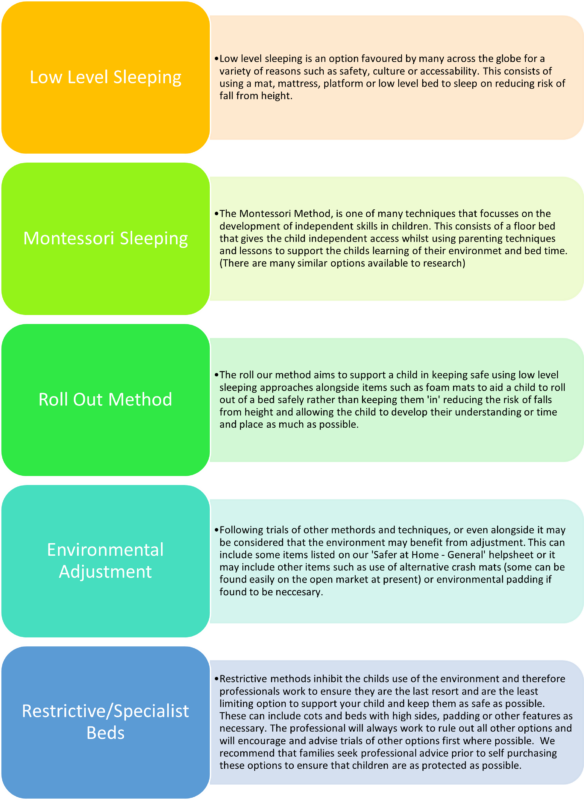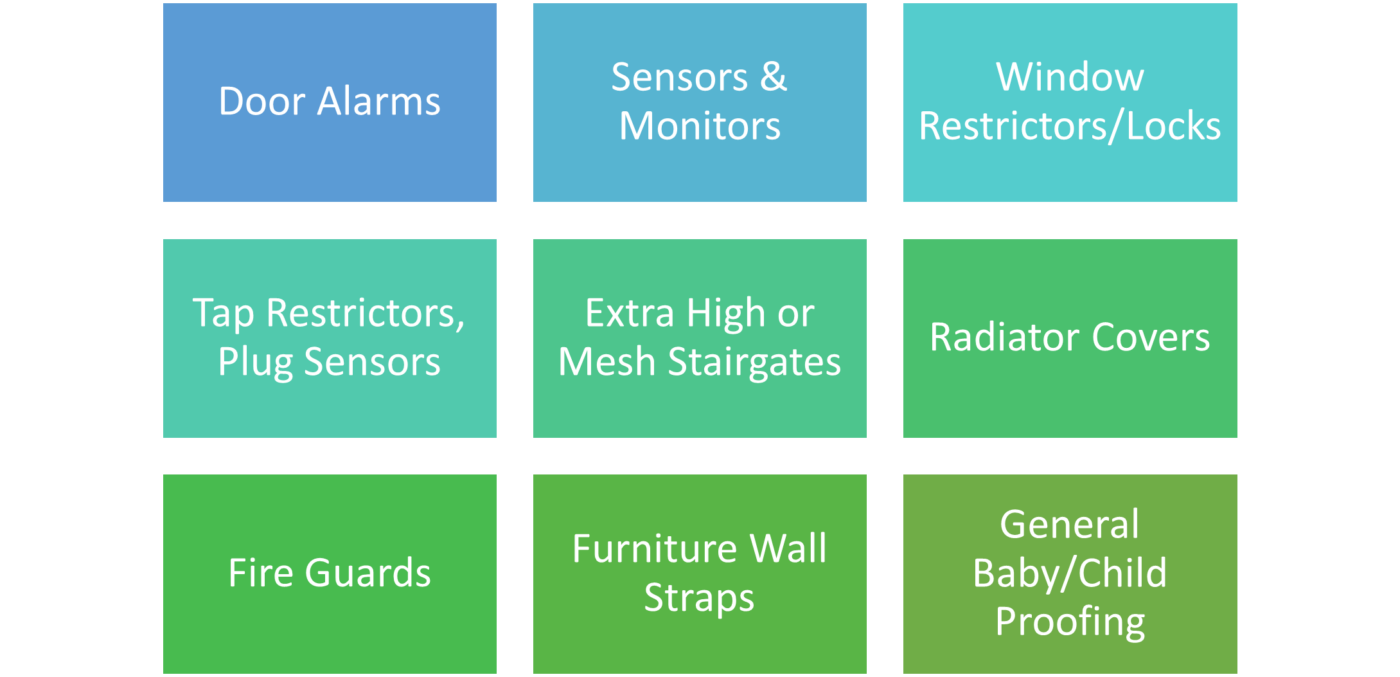Safer at Home
Keeping your child safe at home can be difficult, as they learn and grow, they test their boundaries and challenge their physical capabilities. Having a child with additional needs or disabilities, you may have additional challenges or risk to consider. This section serves to help you explore your options at home to improve your child’s safety.
Below are some suggestions for parents and carers to explore, we recommend reviewing a variety of options to help you choose techniques and advice that suits your family. See some below options to get your started, this is not an exhaustive list and further research is recommended:
- Cerebra
- Montessori
- The Sleep Charity
- Rapid Return Technique
- The Sleep Tight Approach
- Sensory and Behaviour advices from NHS Services

Keeping your child safe at home can be difficult. As they learn and grow, they test their boundaries and challenge their physical capabilities. Having a child with additional needs or disabilities, you may have additional challenges or risks to consider. This section serves to help you explore your environmental options at home to improve your child’s safety alongside other strategies or techniques for learning and behaviour, we also strongly recommend discussing difficulties with your child’s GP or Paediatrician.
Below are some suggestions for parents and carers to explore, we recommend reviewing a variety of options to help you choose techniques and advice that suits your family. See some below options to get you started, this is not an exhaustive list and further research is recommended:

Here are some online resources that provide further advice on baby proofing.

